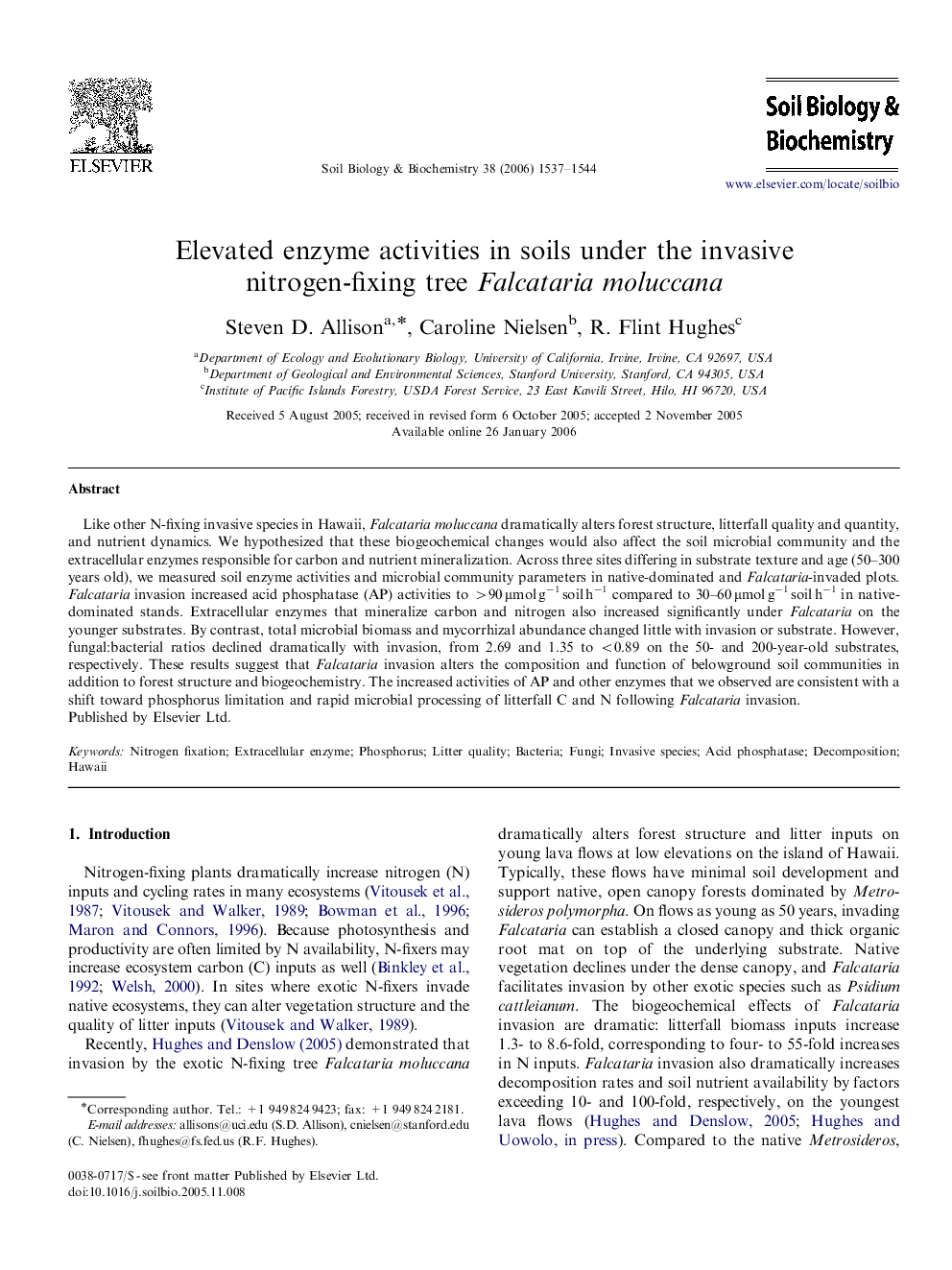| Article ID | Journal | Published Year | Pages | File Type |
|---|---|---|---|---|
| 2026557 | Soil Biology and Biochemistry | 2006 | 8 Pages |
Like other N-fixing invasive species in Hawaii, Falcataria moluccana dramatically alters forest structure, litterfall quality and quantity, and nutrient dynamics. We hypothesized that these biogeochemical changes would also affect the soil microbial community and the extracellular enzymes responsible for carbon and nutrient mineralization. Across three sites differing in substrate texture and age (50–300 years old), we measured soil enzyme activities and microbial community parameters in native-dominated and Falcataria-invaded plots. Falcataria invasion increased acid phosphatase (AP) activities to >90 μmol g−1 soil h−1 compared to 30–60 μmol g−1 soil h−1 in native-dominated stands. Extracellular enzymes that mineralize carbon and nitrogen also increased significantly under Falcataria on the younger substrates. By contrast, total microbial biomass and mycorrhizal abundance changed little with invasion or substrate. However, fungal:bacterial ratios declined dramatically with invasion, from 2.69 and 1.35 to <0.89 on the 50- and 200-year-old substrates, respectively. These results suggest that Falcataria invasion alters the composition and function of belowground soil communities in addition to forest structure and biogeochemistry. The increased activities of AP and other enzymes that we observed are consistent with a shift toward phosphorus limitation and rapid microbial processing of litterfall C and N following Falcataria invasion.
